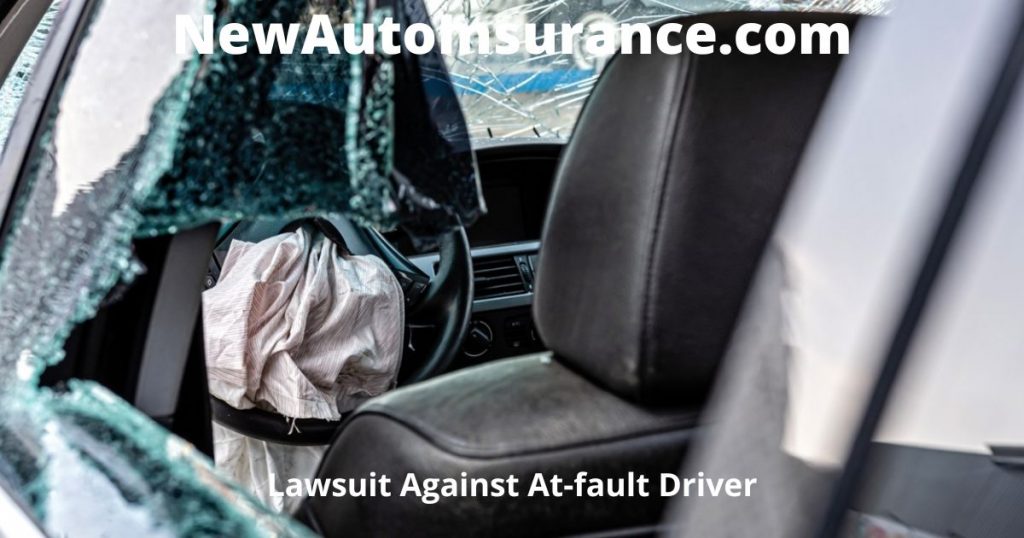Although no-fault PIP payments provide some compensation if you get any injury in a car accident, they are frequently insufficient to cover all of your costs. A vehicle accident lawsuit against the at-fault driver is often the only way to seek full compensation for your injuries. This is especially true for persons who get any harm, damage, or injury due to the 2019 no-fault insurance regulations.
You can only seek two sorts of damages for your vehicle accident injuries when you engage a car accident lawyer to file an auto negligence claim against the at-fault motorist. These are damages for which you would not be eligible to get compensation under your no-fault insurance policy. They are as follows:
- Non-economic damages like losses to the quality of life, pain, and suffering
- Economic loss damages above PIP compensation – include certain out-of-pocket expenses not covered by PIP benefits.
However, specific standards must first be completed to file a vehicle negligence claim for these damages. That is why it’s critical to have an expert lawyer on your side to guide you through the process.
Who has the right to sue the at-fault driver?
The first step in filing a vehicle accident lawsuit against an at-fault driver in Michigan proves that the other motorist was at fault for the collision. “Negligence” is the legal term for failing to act in the same or similar situations as a reasonably cautious person. Speeding, failing to stop the vehicle at a stop sign, failing to yield, running a red light, inappropriate lane usage, and other infractions of the Michigan Motor Vehicle Code are all examples of negligence.
Even if you were somewhat to blame for the car accident, you may be allowed to sue for damages. The number of such damages, on the other hand, will be lowered by the percentage of your fault. It’s called “comparative fault”. If the victim is 20% at blame and the at-fault driver is 80% at fault, the victim’s damages will reduce by 20%. Unless the victim is more than 50% at fault for the accident, Michigan law prohibits compensation for non-economic losses.
In addition to proving that the other motorist was negligent, Michigan law also requires you to establish that your injuries are “severe enough” to warrant filing a claim. An experienced Michigan car accident lawyer will evaluate your case to see if your injury passes this threshold level. (It’s worth noting that claims for excess economic loss don’t need to be accompanied by proof of a threshold injury.)

What happens when a person dies as a result of a car accident?
When a person dies due to a car accident, tort liability also known as a “wrongful death claim,” arises. The decedent’s estate brings wrongful death claims on behalf of family members in Michigan. The Michigan Wrongful Death Act governs all wrongful death cases in Michigan. In general, this law allows close relatives of a deceased victim to seek financial compensation, as well as compensation for the loss of financial support, services, and, perhaps most importantly, the loss of their loved one’s love, affection, companionship, and society.
In car accident lawsuit against an at-fault driver, who pays the damages?
The at-fault driver’s insurance carrier normally pays auto negligence claims. If someone files a lawsuit to recover damages, they must mention the negligent driver’s name in the case. The negligent driver’s insurance company will reimburse the losses up to the full liability coverage bought by the negligent driver.
If your damages exceed the at-fault driver’s liability coverage, the difference may be your responsibility.
What if the at-fault motorist was uninsured or underinsured?
If it was an uninsured or underinsured driver who causes the accident, problems could arise. The term “uninsured” refers to a driver who had no insurance at the time of the accident. Having insufficient insurance to cover the full extent of the accident victim’s losses is called “underinsured”.
Insufficient insurance coverage may leave an injured individual unable to fully recover their losses owing to financial concerns. One can avoid the problem by buying “uninsured motorist coverage” and “underinsured motorist coverage,”. For example, if the at-fault motorist has no or insufficient insurance, the victim can sue their own insurer for damages.
Optional uninsured and underinsured motorist policies can be mandatory in addition to a basic no-fault policy. Since both types of extra coverages are pretty inexpensive, you should seriously consider that motorists obtain both to protect themselves from drivers who do not have insurance or have only inadequate insurance.
Click here to learn more about the auto insurance lawsuit against the at-fault driver.


